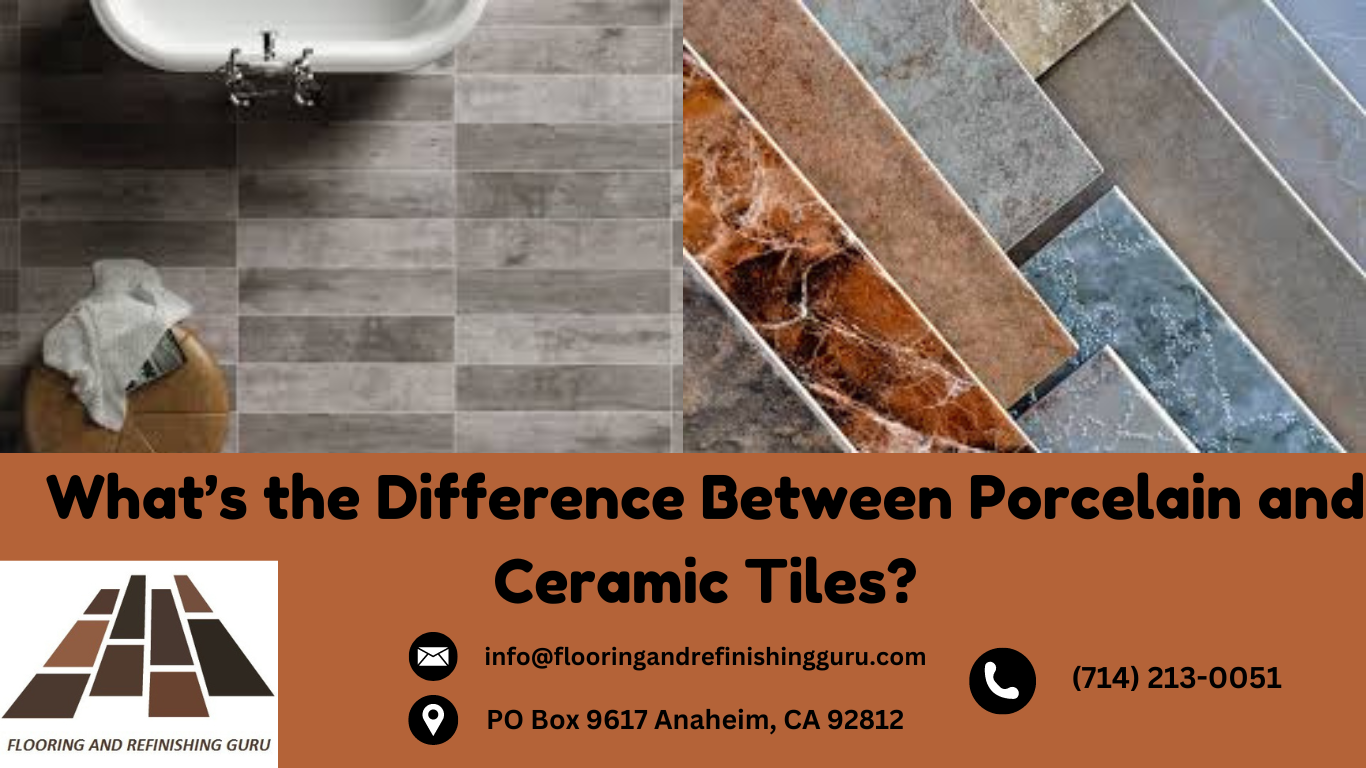Before you select which type of tiles to use for your home it is rather important that you get to know between porcelain and ceramic. Although door is widely used and offers many possibilities, depending on the characteristics of the specific project or application, option b may be more suitable for you. Here is what causes them to be distinct from each other in deeper detail:
Composition and Manufacturing
Porcelain Tiles
These are the regular ceramic tiles given a more refined clay and are fired at a higher temperature compared to the standard ceramic tiles. This process makes the tile much denser – with fewer pores – and much more resistant to water. Porcelain tiles are the most simply and systematically strong tiles that can be used indoors as well as outdoors. From a design perspective they usually resemble stone or wood sometimes, owing to manufacturing technology that has evolved.
Ceramic Tiles
Ceramic tiles consist of clay and some other minerals and are baked at comparatively lower temperatures. This leads to a tile that is of lower density and has more porosity as compared to the porcelain category. Ceramic tiles are cheaper, easier to work on due to the facility to be cut and fixed and thus are ideal for home improvement and interior decorative purposes.
Durability and Performance
Porcelain Tiles
Porcelain tiles are pretty heavy and dense and thus they can resist a lot of usage and can stand harsh treatment. It’s very rare for it to crack or chip and hence ideal for busy areas like corridors, offices, and porches. They also do not display any sign of encourages by moisture, thereby making them appropriate for use in the bathroom or kitchen.
Ceramic Tiles
Sundry; however, it is essential to understand that although ceramic tiles are hard wearing, they are much less hardwearing than porcelain. They are quite suitable for mid-interference traffic areas and are mostly used indoors. Ceramic tiles do not prove to be quite durable as the other tile materials especially where there is a lot of traffic or where they are placed in areas with contact with water and therefore they are used in areas that less traffic or hung as wall tiles.
Water Resistance
Porcelain Tiles
One of the standout features of porcelain tiles is their superior water resistance. The dense structure of porcelain tiles makes them less likely to absorb water, which helps prevent damage and mold growth in moisture-prone areas like bathrooms and kitchens.
Ceramic Tiles
Ceramic tiles are more porous than porcelain and can absorb moisture if not properly sealed. This makes them less ideal for areas with high humidity or frequent water exposure. For best results, ceramic tiles should be used in dry environments or with a suitable sealant to improve their water resistance.
Cost Considerations
Porcelain Tiles
Porcelain tiles typically come with a higher price tag, both in terms of material and installation. The cost reflects their durability, water resistance, and sophisticated appearance. For long-term value, investing in porcelain tiles can be worthwhile, especially for high-traffic or outdoor areas.
Ceramic Tiles
Ceramic tiles are more budget-friendly, making them a cost-effective choice for many applications. They offer a wide range of styles and colors at a lower price point, making them an attractive option for those looking to update their space without a significant investment.
Design and Aesthetic
Porcelain Tiles
Porcelain tiles often feature high-definition patterns and textures that can closely mimic natural materials. Their advanced manufacturing techniques allow for a wide variety of styles, including realistic reproductions of stone and wood.
Ceramic Tiles
Ceramic tiles also come in a variety of designs and colors but may not achieve the same level of realism as porcelain. They are available in many patterns and finishes, making them suitable for a range of design preferences.
In summary, choosing between porcelain and ceramic tiles depends on your specific needs, budget, and design preferences. Porcelain tiles offer enhanced durability and water resistance, making them ideal for high-traffic and moisture-prone areas. Ceramic tiles provide a cost-effective, versatile option for indoor settings. By weighing these factors, you can make an informed decision that best fits your home. For expert advice and more detailed information, consult with the Flooring and Refinishing Guru.


